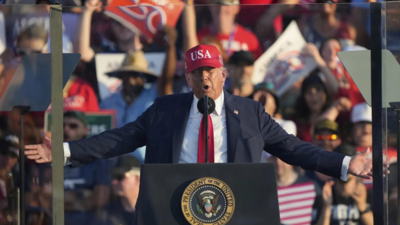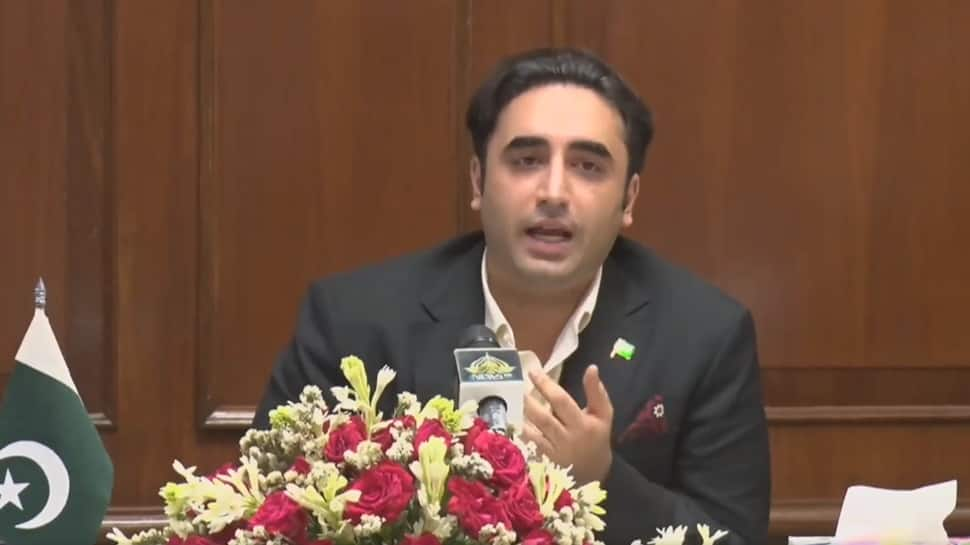One Big Beautiful Bill passed: What’s in it, when it kicks in, and why it matters

US Congress members vote on US President Donald Trump’s tax bill on the floor of the House of Representatives at the US Capitol in Washington, DC, on July 3, 2025. Congress passed the Bill.
| Photo Credit: AFP
In a deeply divided vote that reflected the stark partisan landscape of the United States Congress, the House of Representatives passed the much-publicised “One Big Beautiful Bill” on July 3, 2025, by a margin of 218–214. The Senate had earlier approved the measure 51–50, with Vice President J.D. Vance casting the tie-breaking vote.
The bill, a sprawling 900-page legislative package combining tax cuts, social programme reductions, and expansive federal enforcement funding, now awaits the formal signature of President Donald Trump, expected later today during a symbolic Independence Day event.
Timeline and implementation of the bill
The legislative journey of the “One Big Beautiful Bill” began in late May when the House narrowly passed an initial version using the budget reconciliation process. The Senate then took it up, introducing key amendments to align with broader Republican interests, particularly around fiscal constraints and enforcement.

Following a lengthy vote-a-rama session marked by heated debate, the amended version cleared the Senate. The House subsequently adopted these changes on July 3. With the President’s signature expected on July 4, the bill will become law immediately. However, several of its provisions come into effect gradually, beginning January 2026 and extending through 2028, depending on the section.
Key reforms and their rollout
- Permanent 2017 tax cuts: The bill locks in President Trump’s 2017 tax reforms, making rate reductions and larger standard deductions permanent. It also raises the cap on state and local tax (SALT) deductions substantially, albeit only until 2028 and introduces new temporary breaks for tips, overtime, car loan interest, and senior taxpayers’ deductions, all of which phase out in 2028.
- New tax breaks for everyday workers: To benefit the working class, it offers novel deductions: tip income, overtime pay, auto‑loan interest on U.S.‑assembled vehicles, and a $6,000 deduction for seniors within income limits. However, these incentives are time‑limited and expire in 2028.
- Massive investment in immigration enforcement: A historic $170 billion is earmarked for border and ICE operations, enabling the hiring of new agents, expansion of detention capacity, and border wall construction, making ICE one of America’s best‑funded law enforcement bodies.
- Cuts to Medicaid and SNAP safety nets: To offset revenue loss, the bill enforces deeper Medicaid cuts via work mandates, tighter eligibility checks, provider‑tax reductions, and a federal forfeit of planned funding; similarly, SNAP faces new work thresholds and shifts administration costs to states, risking benefits for millions.
- Clean energy incentives cancelled: It halts key clean‑energy tax credits from the Inflation Reduction Act, underscoring a broader rollback of federal climate support and aligning with its deficit‑cut agenda
- Debt ceiling hike and deficit surge: Congress raised the federal borrowing limit by $4–5 trillion to accommodate new outlays. Even with spending cuts, the Congressional Budget Office estimates the bill will add approximately $2.4–3.3 trillion to national debt by 2034.
- New fees and account structures: Under the legislation, a 1% tax on remittances is imposed, while “Trump Accounts”, tax-advantaged savings structures, are introduced for child support and development.
- Militarisation of defence budget: An additional $150 billion is allocated for defence, including drones, shipbuilding, AI-enhanced systems, missile defence, and Indo-Pacific military presence, marking a significant increase in military modernisation.
- Student-loan and bureaucratic reforms: Caps are placed on graduate and professional student loans, student-debt relief measures are paused, and agencies like the CFPB are defunded or repealed.
Implications for the Indian community and global remittances
One of the more globally significant provisions in the bill is the imposition of a remittance tax. The law mandates a one per cent levy on certain outbound money transfers, specifically those not made through banks. This is expected to directly impact the Indian-origin community in the United States, many of whom use money orders or other informal channels to send funds back home.
Another clause prohibits individual U.S. states from introducing new AI-related legislation for the next ten years, effectively placing a federal moratorium on local regulation of artificial intelligence.
What comes next
Once signed, the bill’s rollout will involve coordinated guidance from the U.S. Department of the Treasury, Internal Revenue Service, Department of Health and Human Services, and the Department of Homeland Security. Federal agencies are expected to begin issuing rulebooks and implementation timelines by Q4 2025.
“One of the most consequential Bills ever. The USA is the ‘HOTTEST’ Country in the World, by far!!!” Trump said on social media as he scented victory. The timing of the vote slipped back as Democratic Minority Leader Hakeem Jeffries spoke against the bill for nearly nine hours, delaying proceedings.
Published – July 04, 2025 05:18 pm IST





